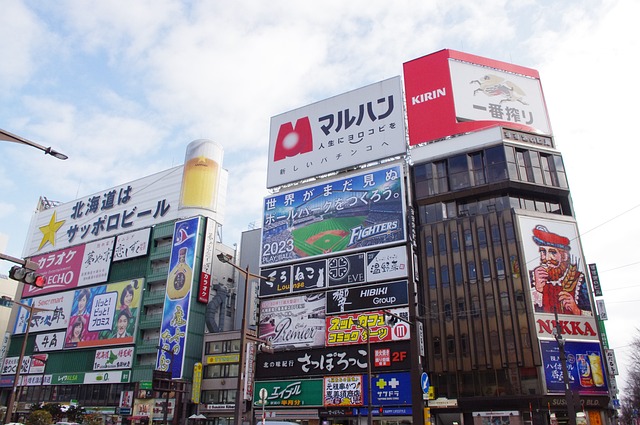Signage boards are essential visual communication tools that guide individuals through diverse environments such as urban areas, campuses, and commercial spaces by providing clear and concise information. They function as navigational aids to help people find their way, locate points of interest, access amenities, direct pedestrians and vehicles, and identify locations, while also serving as platforms for brand messaging and public notices. In urban settings, these boards play a vital role in wayfinding by assisting with the navigation of complex street layouts and enhancing user experience through clear design elements like color coding, symbols, and directional cues. Indoors, they offer orientation within large venues like airports and shopping centers, and double as dynamic marketing tools. The evolution of signage boards from simple wooden plaques to sophisticated digital displays reflects a historical journey marked by technological advancements, emphasizing their critical role in both functional and aesthetic aspects of communication. Modern designs prioritize visibility, clarity, and functionality, leveraging bold typography, high-contrast colors, and clear messaging to cater to a variety of users, including those with visual impairments. The integration of digital technology has further revolutionized signage boards, enabling real-time, interactive, and engaging content in public spaces. Signage boards must adhere to legal frameworks, including zoning ordinances, ADA compliance, and utility locator requirements, ensuring they are accessible, legible, and community-conscious while maintaining brand reputation. The selection of durable materials like aluminum composite panels and polycarbonate, along with sophisticated construction techniques, ensures their longevity and effectiveness in various environments.
Exploring the multifaceted world of signage boards, this article delves into their pivotal role in modern communication, design evolution, and the myriad factors that contribute to their effectiveness. From the foundational principles that guide their creation to the latest trends in materials and construction, we examine how these visual stalwarts can be optimized for impact and sustainability. We’ll navigate through legal frameworks, artistic integration, and technological advancements, all while providing practical insights for businesses aiming to enhance their brand identity with signage boards. Join us as we explore the dynamic intersection of form and function in the realm of signage board innovation.
- Understanding the Role of Signage Boards in Modern Communication
- The Evolution and Design Principles of Signage Boards
- Key Components of Effective Signage Boards
- Materials and Construction Techniques for Durable Signage Boards
- Legal Considerations for Signage Board Installation
Understanding the Role of Signage Boards in Modern Communication

Signage boards serve as pivotal visual communication tools in the modern landscape, providing clear and concise information to guide individuals through various environments such as urban settings, campuses, and commercial spaces. Their role is multifaceted, encompassing everything from directing pedestrians and vehicles to identifying locations, conveying brand messages, and disseminating important public notices. In urban areas, for instance, signage boards are instrumental in facilitating wayfinding; they help people navigate complex street layouts, find points of interest, and locate amenities like restrooms and information centers. The effectiveness of these boards lies in their ability to present information with clarity and legibility, often incorporating elements such as color coding, symbols, and directional arrows to assist users with diverse literacy levels.
Moreover, signage boards are not solely for outdoor use; they are equally critical indoors, where they enhance the user experience by providing orientation within large facilities like airports, malls, and hospitals. They can also serve as dynamic platforms for marketing, showcasing promotions, or informing about operational changes, thereby adapting to the needs of their audience and the requirements of the business. In this digital age, where technology is constantly evolving, signage boards are increasingly integrating with digital solutions such as electronic displays that offer real-time updates and interactive elements, ensuring their role in modern communication remains relevant and impactful.
The Evolution and Design Principles of Signage Boards

Signage boards have been an integral part of communication and wayfinding for centuries, evolving from simple wooden plaques to sophisticated digital displays. The earliest forms of signage were rudimentary, serving as indicators for directions or the display of public notices. Over time, the design of signage boards has been influenced by advancements in materials, printing techniques, and technology. The transition from hand-painted signals to mass-produced printed signs marked a significant shift, allowing for more consistent and readable communication across various environments.
The evolution of signage boards into the modern era is characterized by an increased emphasis on visibility, clarity, and functionality. Contemporary design principles dictate that a signage board should be legible from a distance, cater to diverse audiences, and integrate harmoniously with its surroundings. The use of bold typography, high-contrast color schemes, and clear messaging are hallmarks of effective modern signage. Additionally, the advent of digital displays has introduced dynamic content capabilities, enabling real-time updates and interactive experiences that were previously unimaginable. This technological leap has not only revolutionized the way information is presented but also how it is absorbed and acted upon by viewers, thereby making signage boards an indispensable tool in the visual language of public spaces.
Key Components of Effective Signage Boards

A signage board serves as a critical communication tool in both urban and rural environments, guiding individuals and facilitating wayfinding. The effectiveness of a signage board hinges on several key components that ensure clarity, accessibility, and functionality. Firstly, the design should be intuitive, using clear typefaces and high-contrast colors to maximize legibility for diverse audiences, including those with visual impairments. The placement of these boards is also pivotal; they must be positioned at strategic vantage points along paths or roads where users are most likely to encounter them, such as intersections, entrances, or decision points.
Moreover, the content on an effective signage board should be concise yet informative, providing essential directions, warnings, or information without overwhelming the viewer. The use of symbols and pictograms can complement textual information, especially for non-native speakers or individuals with different literacy levels. Additionally, the material used in constructing these boards must withstand environmental conditions, ensuring durability and maintenance efficiency to keep the signage clear and visible over time. Reflective materials and energy-efficient lighting can further enhance their visibility during various light conditions and throughout different seasons. By integrating these components thoughtfully, a signage board can significantly contribute to the safety, convenience, and overall experience of users navigating any given space.
Materials and Construction Techniques for Durable Signage Boards

When designing durable signage boards, the selection of materials and application of construction techniques are paramount to ensure longevity and clarity in communication. High-quality materials such as aluminum composite panels or polycarbonate are favored for their durability and resistance to environmental factors like wind, rain, and temperature extremes. These materials are often chosen for their ability to retain color and graphics with minimal fading over time, ensuring the sign remains legible and visually appealing.
In addition to robust materials, advanced construction techniques play a crucial role in the longevity of a signage board. Techniques such as weatherproof sealing and adhesion methods are employed to protect electronic components or illumination features within the sign. Furthermore, the use of high-grade fasteners and mounting hardware designed to withstand harsh conditions is essential for outdoor applications. These techniques not only enhance the longevity of the signage board but also reduce the need for frequent maintenance and replacements, making them a cost-effective solution over time. Signage boards constructed with these materials and techniques are ideal for a variety of settings, from commercial complexes to transportation hubs, providing clear, lasting identification that stands up to the test of time.
Legal Considerations for Signage Board Installation

When considering the installation of a signage board, it is imperative to navigate the intricate web of legal requirements that govern such endeavors. Local zoning laws dictate where and what type of signage may be installed, often specifying size, illumination, and content restrictions to maintain community aesthetics and safety. Businesses must secure permits from local authorities, ensuring compliance with the Americans with Disabilities Act (ADA), which mandates accessible design and legibility for individuals with disabilities. Additionally, signage boards must adhere to federal and state regulations regarding electronic display limitations to avoid light pollution and visual clutter. The installation process also necessitates understanding and observing utility locator requirements to prevent potential hazards from underground infrastructure. Adherence to these legal considerations is not merely a compliance matter; it is a critical aspect of responsible business practice that enhances community relations and brand reputation. Proactive engagement with city planners, urban designers, and legal advisors is essential for a seamless signage board installation, ensuring the sign meets all regulatory standards without compromising on its intended purpose or design.
In conclusion, signage boards serve as a critical communication tool in both urban and rural settings, guiding, informing, and enhancing the aesthetic appeal of environments. Their evolution and design principles reflect a harmonious blend of functionality and visual impact, with key components such as legibility, visibility, and durability ensuring their effectiveness. The materials and construction techniques employed in creating signage boards are as diverse as their applications, catering to various climates and conditions. Legal considerations further underscore the importance of adhering to local regulations to ensure responsible installation. As society continues to evolve, so too will the role of signage boards, adapting to meet new challenges in communication. Businesses, municipalities, and individuals must recognize the significance of these structures and invest in their strategic placement and design to maintain clear, effective messaging in an ever-changing world.



